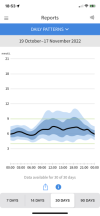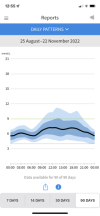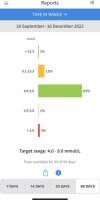pondita
Active Member
- Relationship to Diabetes
- Type 1.5 LADA
Hello all. My last three HgbA1C was 41, 42, and 39. I'm doing my happy dance because my hard work and vigilant BS control is paying off. But it's making my GP and my endocrinologist nervous. I send them my graphs (range 4-9). I do random ketone checks, which are always fine. I am fully hypo aware at 4-ish. I love carbs and eat them every day (although in much smaller portions than before my diabetes days!). They both want me to take less of my Lantus, even though I tell them at my current dose, my basal tests are flat or slightly elevating. I say I'm using the NICE guidelines for my daily control, which suggest 5-7 upon waking, and 4-7 before meals. IDK what to do. I feel like I'm not on the same page as my medical caregivers. Every time I get an A1C, we have these same sorts of conversations. Ideas? Am I not doing the right thing with my control, because they say I'm not? They seem to think that because of my tight control, I'm going to have an unexpected low and pass out. They say they want my A1C to be higher, full stop. I appreciate your thoughts, and thank you in advance.




